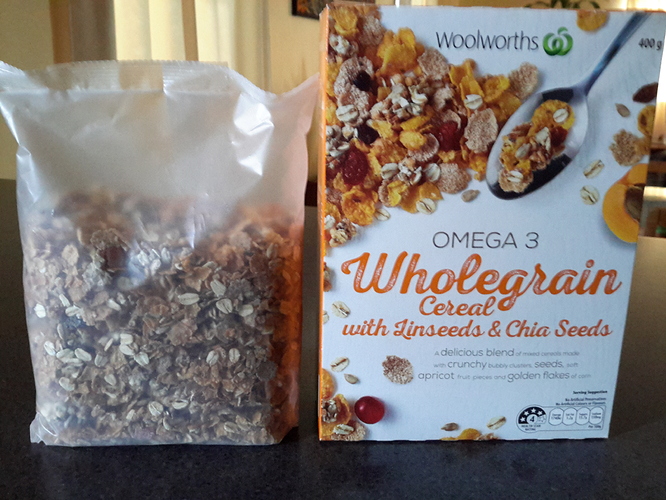They must be at least 1.8 kg in net weight on sale, when we packed bananas we had to ensure we packed more weight than the amount labelled on the boxes to ensure that any loss of weight did not take the contents below that label. That means for any product sold with a minimum net weight it must be at or above that weight to comply. Addition of fluid in a can while unethical is used to reduce the amount of product used but still complies with the net weight stated. That is why on cans or similar products it is useful to know what % of product is actually in the container. As for the ducks they failed to achieve the stated minimum weight and so were in breach of the legislation.
From the National Measurement Institute in regards to these types of items:
"Pre-packed Articles with Differing Measurements
These articles are known as random-weight or catch-weight articles. It is not possible to undertake a sample because while they are the same kind of product, the measurement differs. It is not meaningful to calculate an ‘average’ measurement.
The measurement of any such article – whether it is expressed as weight, volume, number, area or length – must not be less than the measurement stated on the package label. The legislation does not allow for any deficiency in even a single package’s contents.
The legislation does not allow a deficiency for ‘desiccating’ goods, other than those identified that might dry out and lose weight. If the article is likely to lose weight over time through evaporation, dehydration or other means, the packer must make allowances for any expected losses in the measurement when packaging the product for the entirety of its shelf life.
All goods pre-packed for sale must be marked with the net measurement (i.e. the weight of the contents without the packaging material)."
In regards to the underweight items the following is required by the legislation:
"What to do with Shortfall Packages
Sometimes compliance sampling might indicate that packages have a shortfall, i.e. the measurement of the package is less than that stated on the label. Remedial actions must be taken if:
- a single package deficiency exceeds the permissible tolerance and/or
- the average (or the weighted average in the context of AQS) measurements of sample packages is less than the nominal measurement marking.
In either case you will need to:
- identify the faulty packages
- remove them from your distribution channel, and place them in quarantine
- clearly mark the packages to prevent their inadvertent release
- report the details to senior management
- implement appropriate preventative measures.
Note: Even if non-compliant packages are sold at a substantial discount (or even given away) you still have to ensure that the correct measurement is marked on the package and that you comply with the trade measurement laws.
Identify the Causes and Take Remedial Action
- Review processes and procedures including the efficiency and accuracy of process sampling.
- Identify and adjust any faulty equipment or process. If this is not possible, tag out equipment identified as faulty.
- Consider operator retraining or closer supervision if that seems appropriate.
Sort Quarantined Packages
- Identify the packages which are excessively deficient and remove them.
- Consider removing packages with permissible deficiencies in order to improve sample average to equal or exceed the nominal marked measurement. Recheck a sample of this revised batch of packages to ensure that it now complies with the marked measurement.
Re-labelling Packages
- Re-labelling to a lesser marked measurement must be consistent with the trade measurement laws. However before re-labelling, consider whether this may cause marketing problems. Discuss this with your retailer. Buyers may expect a constant nominal quantity for particular-sized containers even though the laws may not require it.
- A person who re-labels a package with a revised measurement marking is responsible for the accuracy of that measurement marking. The action of re-labelling with a revised measurement marking may also require the person to identify themselves as the packer. Hence, they would have to include their name and address on the package.
Repacking and Topping Up
- Identify those individual packages which have failed due to excessive deficiency and repack or top them up.
- Apply the same procedure to packages with permissible deficiencies which are causing a failure of the average, in sufficient numbers to bring about a sample average that equals or exceeds the nominal marked measurement.
- Re-check a sample of this revised batch of packages to ensure that it now complies with the marked measurement.
- Consider other remedial actions if these procedures are uneconomic or impractical."
The requirements are quite stringent and are clearly detailed and the staff at the Supermarket also failed in their obligations:
"Sellers should insist that their suppliers – both packers and importers – are aware of the requirements of the national trade measurement laws and can demonstrate that they comply with the laws and have in place quality control systems. They should have in place their own quality control system to monitor and verify compliance of the goods they sell.
While the method of checking the measurement of packages and recording the results of process and compliance sampling is not prescribed by law, the more extensive the checks and records, the more packers/importers/sellers can prove that they did everything in their power to ensure the correct measurement of the packages. The extent of these checks depends on each set of circumstances. "


